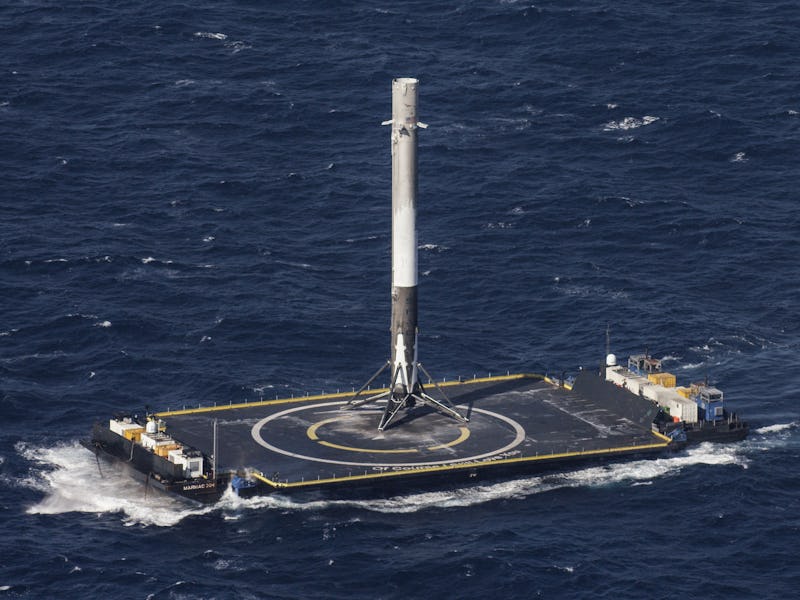Musk Reads: Musk teases SpaceX droneship upgrades
Starlink gears up for big tests and a new reality TV show is announced. What could Starlink mean for global society?

Starlink gears up for big tests and a new reality TV show is announced. What will Starlink mean for global society? It’s Musk Reads: SpaceX Edition #203.
A version of this article appeared in the “Musk Reads” newsletter. Sign up for free here.
Musk quote of the week
“Current was too strong for droneship to hold station. Thrusters to be upgraded for future missions.”
- Read more about Musk’s plans for future drone ships.
SpaceX
SpaceX pulled the plug on its next Starlink mission on September 17 amid concerns that SpaceX’s drone ship would not be able to stay at the right location to recover the booster. A Falcon 9 rocket was due to send up the 13th batch of Starlink satellites, with plans to lift off from Space Launch Complex 40 at the Cape Canaveral Air Force Station in Florida. SpaceX stood down on the day of the launch and later canceled plans for a launch on the following day. After the event, Musk declared the thrusters would be upgraded for future missions. Thruster upgrades were previously spotted in December 2019.
In terms of other drone ship upgrades, SpaceX has applied for permission to test its Starlink internet service with its two drone ships. The filing, sent to the Federal Communications Commission, describes plans to test terminals on up to 10 vessels for two years. The tests could demonstrate one of the biggest potential benefits for Starlink: high speed internet for boats. Read more.
What’s next for SpaceX: SpaceX is set to launch the 13th batch of Starlink satellites at an as-yet undetermined time. The mission is set to lift off from Space Launch Complex 40 at the Cape Canaveral Air Force Station in Florida.
In other Musk news…
A reality television contestant is set to make their way to the International Space Station. Production company Space Hero will be working with Axiom Space to send one lucky space fan to the station by 2023. Axiom Space has big plans for the station, with the ultimate end goal of starting the world’s first commercial space station. While the firm is planning to send three space tourists to the station in 2021 using a SpaceX Crew Dragon capsule, it is not yet clear whether the television project will also use the SpaceX capsule. Read more.
Musk Reads mailroom
Tito Haggardt writes:
With giant dust storms on Mars I was hoping Elon was thinking of designing a salt/thorium reactor to be a back up solar charging system to the Mars colony. If a standardized model was design it could also be used here on earth. On Mars if salt was discovered it could be processed there so the weight that would be necessary to transport would be reduced. I would be interested in hearing others views on this idea.
The idea bears similarities to astronomer Frank Shu’s idea for a “two-fluid molten salt reactor,” covered by Wired in 2016. This would use salt to help cool the system rather than the water seen in traditional systems. An alternative fission system called Kilopower claimed in August 2019 that it could start in-space trials in just a few years.
Norman Hoffman writes:
What effect will the widespread placing of satellites have on planetary wi-fi for everyone, especially those in remote areas? And, when will we see some effect?
Good question! The possibilities for widespread satellite internet are immense. It could help millions of rural and underserved Americans get online. The BBC notes it could help people around the world get online, which could mean more people applying for jobs or even working remotely. McKinsey explained in April 2018 that better access to technology could help women in Asia Pacific. A 2015 report from Brookings explained that getting people connected in the developing world could “encourage greater economic development, improve education and health care, and strengthen civil society around the world.” It’s hard to say how long it could take before the world starts seeing these effects, as it depends in part on how quickly SpaceX can roll out services, but the long-term potential is enormous.
Got any comments or queries? Don’t forget to send them over to muskreads@inverse.com.
Photo of the week
Four Starship prototype models.
Got any photos or videos you’d like to share? Feel free to send them over to muskreads@inverse.com.
The ultra-fine print
This has been Musk Reads: SpaceX Edition #203, the weekly rundown of essential reading about futurist and entrepreneur Elon Musk. I’m Mike Brown, an innovation journalist for Inverse.
- Email me directly at mike.brown@inverse.com and follow Inverse on Twitter @inversedotcom. Follow me on Twitter @mikearildbrown.
- Got any comments or queries? Don’t forget to send them over to muskreads@inverse.com.
What did you think of today’s stories? Hit reply to this email to let us know. Thanks for reading!
A version of this article appeared in the “Musk Reads” newsletter. Sign up for free here.